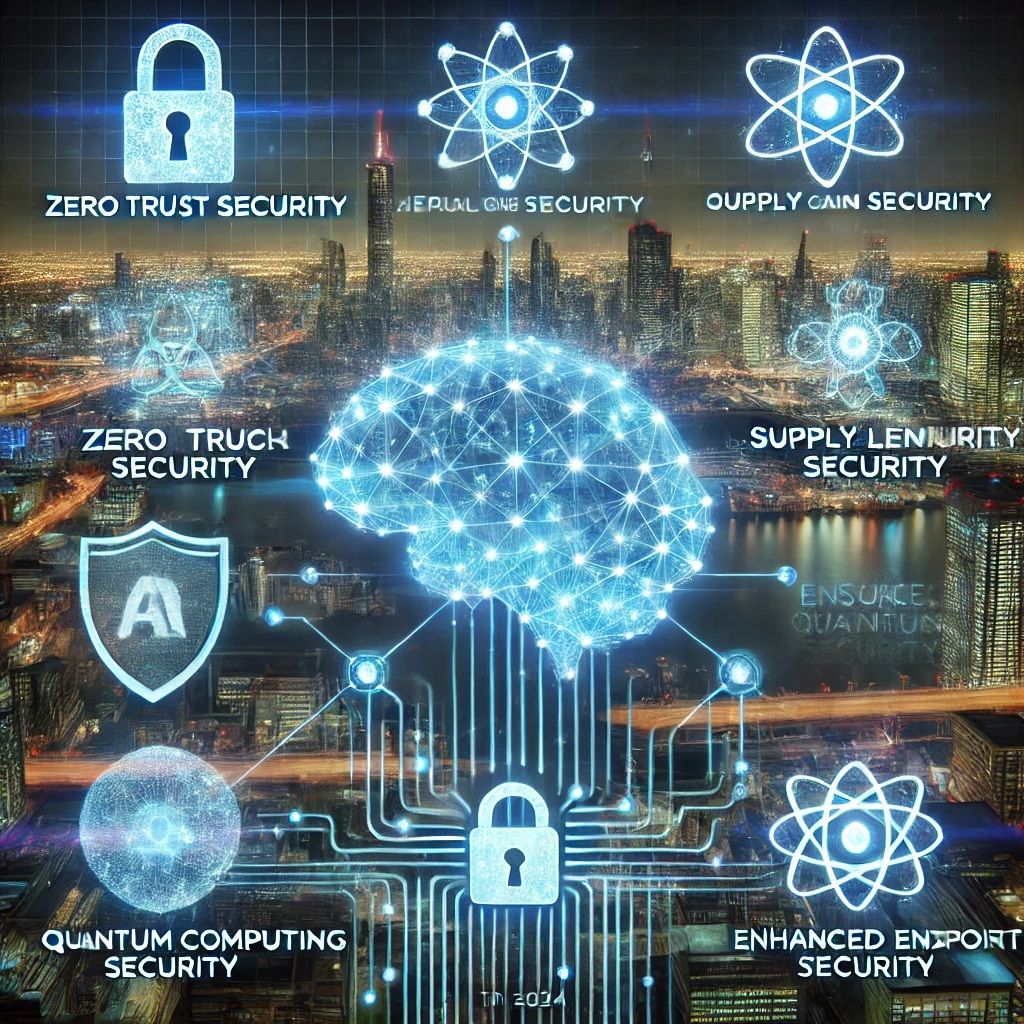As we pass the midpoint of 2024, the cybersecurity landscape continues to evolve rapidly. Businesses must stay vigilant and adaptive to emerging threats and technologies. This blog will explore the key security trends of 2024 and provide insights into how the dynamics of the industry are shifting.
1. AI and Machine Learning in Cybersecurity
Current Trend: AI and machine learning (ML) have become essential tools in the cybersecurity arsenal. These technologies enable faster detection of anomalies, automated threat responses, and predictive analytics.
Industry Dynamics: In the first half of 2024, we’ve seen significant advancements in AI-driven security solutions. These tools are now more accessible to small and medium-sized businesses (SMBs), allowing them to leverage sophisticated defense mechanisms previously available only to large enterprises.
Key Takeaway: Investing in AI and ML for cybersecurity can enhance threat detection and response capabilities, making it a crucial area for businesses to explore.
2. Zero Trust Architecture
Current Trend: Zero Trust continues to gain traction as a security framework that assumes no one, whether inside or outside the network, can be trusted by default. Verification is required from everyone attempting to access resources on the network.
Industry Dynamics: Implementation of Zero Trust models has accelerated, with more organizations adopting this approach to secure remote work environments and protect against sophisticated cyberattacks. The shift towards hybrid work models has made Zero Trust a critical component of modern cybersecurity strategies.
Key Takeaway: Adopting a Zero Trust architecture can significantly reduce the risk of data breaches and unauthorized access, making it a must-have for 2024 and beyond.
3. Increased Focus on Supply Chain Security
Current Trend: The interconnectedness of global supply chains makes them attractive targets for cybercriminals. High-profile attacks in previous years have highlighted vulnerabilities in supply chain security.
Industry Dynamics: In 2024, there is a heightened emphasis on securing supply chains. Organizations are scrutinizing their third-party vendors and implementing stricter security protocols to prevent breaches originating from weak links in the supply chain.
Key Takeaway: Conducting thorough security assessments of all third-party vendors and integrating supply chain security into overall cybersecurity strategies is essential for protecting against supply chain attacks.
4. Rise of Quantum Computing Threats
Current Trend: Quantum computing poses a future threat to traditional encryption methods. While practical quantum computers are still in development, the potential risks are prompting proactive measures.
Industry Dynamics: The first half of 2024 has seen increased investment in post-quantum cryptography. Organizations are beginning to explore and implement encryption techniques that can withstand quantum computing capabilities.
Key Takeaway: Preparing for quantum computing threats by investing in post-quantum cryptography can future-proof your organization’s data security.
5. Regulatory Compliance and Data Privacy
Current Trend: Data privacy regulations are becoming more stringent worldwide. Compliance with regulations like GDPR, CCPA, and others remains a top priority for businesses.
Industry Dynamics: In 2024, new regulations have emerged, and existing ones have been updated, increasing the complexity of compliance. Businesses are investing heavily in data privacy measures to avoid hefty fines and maintain customer trust.
Key Takeaway: Staying informed about regulatory changes and implementing robust data privacy practices are critical for legal compliance and protecting customer data.
6. Enhanced Endpoint Security
Current Trend: With the proliferation of remote work, securing endpoints (laptops, smartphones, tablets) has become more important than ever.
Industry Dynamics: Advanced Endpoint Detection and Response (EDR) solutions are being widely adopted to provide real-time monitoring and automated responses to potential threats. The first half of 2024 has seen a surge in endpoint security investments.
Key Takeaway: Strengthening endpoint security is crucial for protecting against breaches, especially in a remote or hybrid work environment.
The cybersecurity landscape in 2024 is marked by rapid advancements in technology and evolving threats. Businesses must stay proactive and adaptive, leveraging AI and ML, adopting Zero Trust models, securing supply chains, preparing for quantum computing, ensuring regulatory compliance, and enhancing endpoint security. By keeping these trends in mind and investing in the right strategies, organizations can protect themselves against the ever-changing threat landscape. Stay ahead of the curve by continuously updating your security measures and staying informed about the latest industry developments. Cybersecurity is a dynamic field, and staying vigilant is key to safeguarding your business
